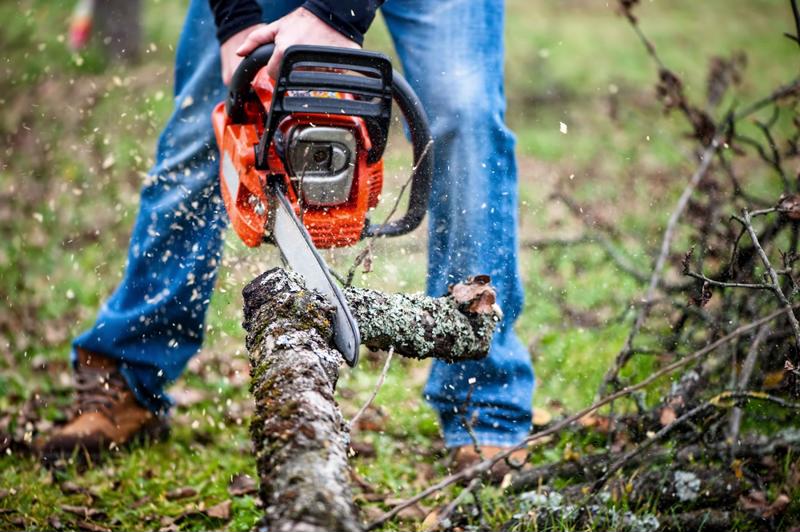If you’ve just made the jump from amateur lawn care do-it-yourselfer to the house with the best-looking lawn on the block, odds are that you want to keep it that way. For some people, that involves stepping up their arsenal of yard care equipment. While mowers and leaf blowers can help you win the crown, it might take something a bit more powerful to keep you there.
That’s why chainsaws are such a popular option for so many homeowners who want to take storm cleanup, tree pruning and other tasks into their own hands. Whether you’ve never held a chainsaw in your life or are looking to upgrade your business’ fleet of equipment, a chainsaw from Husqvarna can expand your lawn care skillset. Check out these four maintenance tips that will help keep your chainsaw blades as sharp as your lawn looks.
 With a little maintenance, even you can feel like a master logger.
With a little maintenance, even you can feel like a master logger.1. Grab a set of files for blades and depth gauges
It’s not the most well-kept secret in the industry or anything, but if you go out into the yard with a dull chainsaw, you’ll be spending more time digging the blade out of whatever cutting than you’ll actually be making progress. Dull chainsaw blades are actually more of a health hazard than anything else. Unlike sharp blades that make smooth passes through most materials, dull ones have the tendency to catch and skip, which could lead to a nasty case of kickback for the unfortunate user.
You got into the lawn DIY game because you like to get your hands dirty, and if you pick up a set of files for blades and depth gauges, you’ll be back to cutting wood like butter in no time. Just make sure you sharpen both left and right segments in each blade pairing, otherwise you could be left with an uneven cut that applies unbalanced pressure to the blade. Just make sure you don’t use any regular file to sharpen your chainsaw blades. Cosmetic ones will be ripped to shreds and cylindrical files, known as rattails, will give you an uneven edge.
How often should you sharpen your chainsaw’s blade? Go by the debris it creates. Wood should appear in fine flakes or shavings when your blade is sharp and more like dust when it’s not.
“Take a few minutes before every few jobs to check the chain tension.”
2. Check the tension
Almost as dangerous as a dull blade is a loose one. Just because the teeth can bite into the wood doesn’t mean they won’t start flying all about when the pressure of the material forces it back. In fact, a loose chain increases the risk of breakage, which is as close to a worst-case scenario in chainsaw work as you can get.
Instead, take a few minutes before every few jobs to check the chain tension. A chain with the right amount of tension won’t show the bottom of any drive links when you try to pull it away from the bar. Alternatively, if the bottom half of the links hang visibly away from the rest of the body, it’s time to break out the tools.
Refer to your owner’s manual for the correct device, then loosen the fastenings on the side panel of the chainsaw. There should be a small screw parallel to the blade that you can adjust to fiddle with the tension.
3. Give it a tune-up
Just like a sharp blade won’t do you any good if it’s too loose, a tense one isn’t going to produce any better results if your engine can’t cut the mustard. Many chainsaw users forget that they need to give the engine just as much love as every other part of the machine.
Because of its small size, tuning up a chainsaw’s engine usually isn’t the most time-consuming affair. Break down the machine according to your manual until you have access to the engine, then go to work with your new spark plug, air and fuel filters. Make sure you remove any obvious dirt or debris from within the engine and close it all back up for a chainsaw that’s as raring to go as you are.
4. Check the chain brake
Congratulations, you now have an incredibly sharp and powerful chainsaw at your disposal. While you’ll be able to get all your work done in a fraction of the time now, it’s also a good idea to consider what you can do to make sure the only thing this now-sharpened blade comes into contact with is wood.
That’s why you should check to make sure your chain brake is functioning properly before each and every job. The more powerful your machine gets, the harder it is for you to control kickbacks when they happen. You should also be wearing protective equipment, but if you don’t test the chain brake, it might not matter anyway.